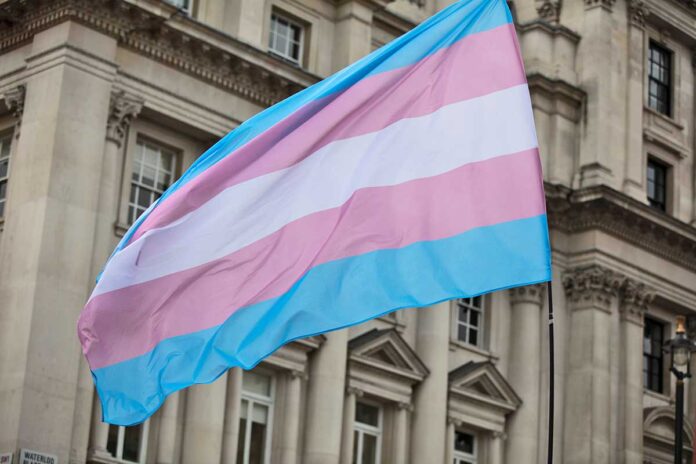Decades before the upper floors of a three-story building at the corner of Broadway and Kearney, in San Francisco, became a co-working office space, it was home to a nightclub Called Finocchio’s. Unique among its North Beach contemporaries, the club featured “female impersonation” acts.
Indeed, growing out of its seedy speakeasy past, the club became known for its shows featuring gay and straight men performing as women. While in the parlance of the time, the club hosted “female impersonators,” though we’d consider it more a progenitor of the drag of today.
Finocchio’s was quite popular for decades, with celebrities ranging from Frank Sinatra to Bette Midler counted among its clientele. It was also a huge hit with the tourist crowd that visited the city including, I note, a young couple who honeymooned in the city in 1960. That would be my mom and dad.
However popular the show and its performers were, they did have one rule I find especially noteworthy, both then and today. Even though the club made its name presenting “female impersonator” shows, every performer was required to enter and exit the club as men.
Indeed, we served not for ourselves, but at the pleasure of a non-trans, non-gay club owner, to a predominately non-gay, non-trans audience. Deviating from that would get you removed from the club.
Now pardon me: I want to deviate for a moment, and address an elephant in this room.
In the decades between Finocchio’s heyday and now, drag performance and trans identity have, shall we say, not been the closest of friends. Many in drag circles have looked down on trans identities, and many in trans circles have looked down on drag.
I’m of the opinion that much of the dictates expressed by both circles may be born out of fear.
Those in drag may not want to be associated with transness, and will insist that they are merely portraying a character, performing, and that this has little to do with identity.
Meanwhile, many trans people will say something very similar, noting that being trans is an innate part of their identity, and should not be equated with simply wearing a costume for some cheap laughs.
Both have points, but if you think that presenting a drag persona is going to cause others to think you are trans, or you think that your trans self is going to be delegitimized by others equating it with drag, and you lash out as a result, that is a fear reaction. But we have plenty to fear without fighting each other over some phobias.
Those who stand against us, both drag and trans, really don’t care about the distinctions, and if they can regulate us both out of existence while we continue to fight among ourselves, that’s just a bonus in their eyes.
At this time, there are anti-drag bills coursing through state houses across the country. Many of these seek to list venues with drag shows as “sexually oriented businesses,” with many such bills defining drag as broadly as possible, such as declaring that anyone who dances, sings, or monologues while wearing attire associated with a gender different than they were assigned at birth.
Yes, this is so broad, that many suspect it would move many of Shakespeare’s plays to be declared adult, as well as potentially relegate any male performer in eyeliner or tights to be declared “adult entertainment.”
Not that they’ll likely use such laws in that case: we know exactly who they’d be aiming this at.
For the last twenty or so years, “RuPaul’s Drag Race” has graced the smaller screen, growing the pop culture popularity of drag. Indeed, Drag moved from the bars to MTV, becoming big business for successful contestants as well as for the show’s titular star, RuPaul.
I would content that, much like transgender people reached our pop culture “tipping point” in 2014, followed by the culture war backlash of today — and our own torrent of anti-trans legislation — drag also reached its own “tipping point” where it crossed over from a purely “in community” activity to an Emmy-winning medium that lands its stars on Broadway.
As the GOP and its de facto leader, Donald Trump, flail about to find grievances to appeal to their rabidly bigoted base, both trans rights and drag performance have found themselves in the crosshairs.
At Finocchios, we were welcomed onto the stage and allowed to perform, provided we were pretty, had a good singing voice and, just as importantly, were still willing to pack up our finery and assimilate at the end of the night. Again, we served at their pleasure, not our own.
Likewise, it was fine if drag performers stuck to the clubs and bars — but becoming a fixture of American pop culture was a road too far, and now the right wants to make sure we know our place. The fight — sometimes very literally — over “drag queen story time” and the like illustrate this perfectly. They don’t want anyone to think there is anything aspirational about drag, or trans ness, and they seek to quash it by any means possible.
Now is a time for our communities to stand up, together, and let it be known that, drag or trans, we will be exactly who we are, and no one else is going to legislate us out of existence. We need to learn to work together, and set aside our fears and differences, for the betterment of all.
Gwen Smith later became a friend of one of the performers who entertained her parents. You’ll find her at www.gwensmith.com/.

